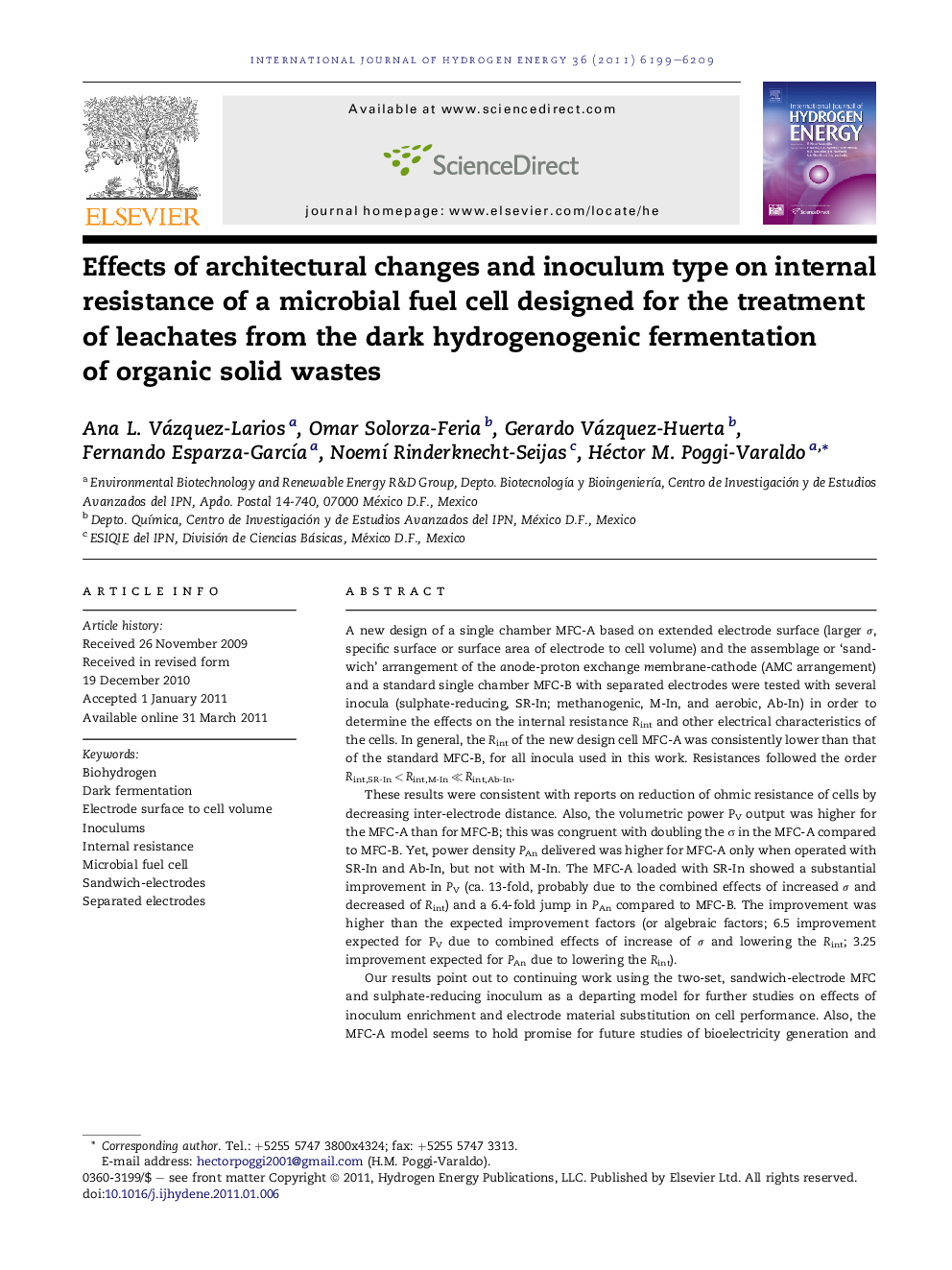| کد مقاله | کد نشریه | سال انتشار | مقاله انگلیسی | نسخه تمام متن |
|---|---|---|---|---|
| 1279551 | 1497583 | 2011 | 11 صفحه PDF | دانلود رایگان |

A new design of a single chamber MFC-A based on extended electrode surface (larger σ, specific surface or surface area of electrode to cell volume) and the assemblage or ‘sandwich’ arrangement of the anode-proton exchange membrane-cathode (AMC arrangement) and a standard single chamber MFC-B with separated electrodes were tested with several inocula (sulphate-reducing, SR-In; methanogenic, M-In, and aerobic, Ab-In) in order to determine the effects on the internal resistance Rint and other electrical characteristics of the cells. In general, the Rint of the new design cell MFC-A was consistently lower than that of the standard MFC-B, for all inocula used in this work. Resistances followed the order Rint,SR-In < Rint,M-In ≪ Rint,Ab-In.These results were consistent with reports on reduction of ohmic resistance of cells by decreasing inter-electrode distance. Also, the volumetric power PV output was higher for the MFC-A than for MFC-B; this was congruent with doubling the σ in the MFC-A compared to MFC-B. Yet, power density PAn delivered was higher for MFC-A only when operated with SR-In and Ab-In, but not with M-In. The MFC-A loaded with SR-In showed a substantial improvement in PV (ca. 13-fold, probably due to the combined effects of increased σ and decreased of Rint) and a 6.4-fold jump in PAn compared to MFC-B. The improvement was higher than the expected improvement factors (or algebraic factors; 6.5 improvement expected for PV due to combined effects of increase of σ and lowering the Rint; 3.25 improvement expected for PAn due to lowering the Rint).Our results point out to continuing work using the two-set, sandwich-electrode MFC and sulphate-reducing inoculum as a departing model for further studies on effects of inoculum enrichment and electrode material substitution on cell performance. Also, the MFC-A model seems to hold promise for future studies of bioelectricity generation and pollution abatement processing leachates produced during biohydrogen generation in dark fermentation processes of organic solid wastes.
Journal: International Journal of Hydrogen Energy - Volume 36, Issue 10, May 2011, Pages 6199–6209